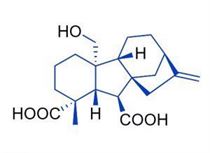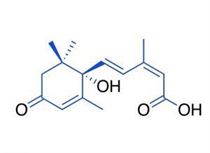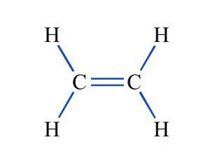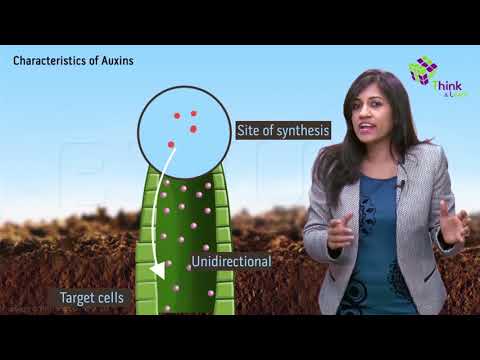Plants require light, water, oxygen, minerals and other nutrients for their growth and development. Apart from these external requirements, plants also depend on certain organic compounds to signal, regulate and control the growth of plants. These are collectively called Plant Growth Regulators or Plant Growth Hormones.
There are different types of Plant Growth Regulators, which are also referred to as phytohormones. Let’s learn about them in more detail below.
Table of Contents
Plant Growth and Development – An Introduction
Plant growth regulators are the chemical substances which govern all the factors of development and growth within plants. Some other names used to refer to it are phytohormones and plant growth hormones.
Phytohormones are organic compounds which are either synthesized in laboratories or produced naturally within the plants. They profoundly control and modify the physiological processes like the growth, development, and movement of plants.
Based on their actions, plant growth regulators are broadly classified into two major groups:
-
Plant growth promoters
-
Plant growth inhibitors.
Auxins, Gibberellins, and Cytokinins are grouped into Plant growth promoters while Abscisic acid and Ethylene are grouped into Plant growth inhibitors.
Ethylene can be grouped either into the promoters or into the plant inhibitors.
Let us have a detailed look on the plant growth and development before studying plant hormones or plant growth regulators.
Types of Plant Growth
Primary and Secondary Growth
The meristematic cells present at the root and shoot apices divide mitotically and increase the length of the plant body. This is known as primary growth. Secondary growth is referred to as the increase in the diameter of the plant body by the division of the secondary meristem.
Unlimited Growth
When the plant constantly grows from the germination stage to death, it is called unlimited growth.
Limited Growth
In this stage, the plant parts stop growing after attaining a certain size.
Vegetative Growth
It involves the production of stem, leaves, and branches, except the flowers.
Reproductive Growth
Flowering occurs at this type of growth stage.
Also Read: Metabolites
Factors Affecting Plant Growth
There are four major factors that affect the growth of the plants. They are:
Light
Plants are autotrophs. They require light for manufacturing their food. Limited light or the absence of it greatly affects the growth of the plant. The intensity of light, quality of light, and light duration influence the movement of stomata, chlorophyll synthesis, photosynthesis, and various other physiological factors. Light also encourages flowering and fruiting. During winters when the days are short, the growth of the plants is retarded.
Water
Plants cannot survive without water. Around 90% of the plant body comprises water. Plants become stressed in the absence of water and die. Water present in the soil is absorbed by the plant, which absorbs and transports the nutrients along with it. Water keeps the plant hydrated.
Temperature
Plant growth is greatly influenced by temperature. High temperatures speed up transpiration, photosynthesis, and germination processes. Low temperatures, however, slow down the growth of the plants.
Nutrients
Just like human beings, plants require proper nourishment for their growth and development. Soil nutrients are divided into macronutrients and micronutrients. Nitrogen, potassium, calcium, magnesium, sulfur, and phosphorus are the macronutrients required by the plants. The micronutrients include iron, copper, etc. Deficiency of these nutrients in plants makes them prone to several diseases. Even if a single nutrient is lacking, it results in stunted growth of the plant.
Discovery of Plant Growth Regulators
Though it was serendipity, initial steps of the discovery of major plant growth regulators began with Charles Darwin and his son, Francis Darwin. They observed the growth of coleoptiles of canary grass towards the light source-phototropism. Followed by a series of experiments, they concluded the presence of a transmittable substance that influences the growth of canary grass towards the light. That transmittable substance was what we know as auxin which was isolated later by F.W. Went.

Effect of Auxin on Plant Growth
Later, many scientists discovered and isolated different plant growth regulators. Gibberellins or gibberellic acid was formerly found in uninfected rice seedlings and was reported by E. Kurosawa. F. Skoog and Miller discovered another growth-promoting substance named kinetin, which is now known as cytokinins.
Characteristics of Plant Growth Regulators
As the plants require oxygen, water, sunlight, and nutrition to develop and grow, they do require certain chemical substances to manage their growth and development. These chemical substances are known as Plant Growth Regulators and are naturally produced by the plants itself.
These are simple organic molecules having several chemical compositions. They are also described as phytohormones, plant growth substances, or plant growth hormones.
They can accelerate as well as retard the rate of growth in plants.
Plants growth hormones or plant growth regulators exhibit the following characteristics:
-
Differentiation and elongation of cells.
-
Formation of leaves, flowers, and stems.
-
Wilting of leaves.
-
Ripening of fruit.
-
Seed dormancy, etc.
Generally, there are five types of plant hormones, namely, auxin, gibberellins (GAs), cytokinins, abscisic acid (ABA) and ethylene. In addition to these, there are more derivative compounds, both natural and synthetic, which also act as plant growth regulators.
Types of Plant Growth Regulators
Plant growth hormones or regulators are of the following types:
- Plant Growth Promoters
- Plant Growth Inhibitors
Plant Growth Promoters
Auxins

The first phytohormone to be discovered is the Auxin and it was discovered by the biologist Charles Darwin.
Auxins are one of the most important plant hormones. The chief naturally occurring auxin is indole-3 acetic acid – IAA and other related compounds. The term Auxin is derived from the Greek language meaning to grow.
These plant growth regulators are generally produced at the points of stems and roots from where they are transported to other parts of the plants. These plant hormones include both natural and synthetic sources. Indole-3-acetic acid and indole butyric acid are obtained from natural plant sources, whereas naphthalene acetic acid and 2, 4-dichlorophenoxyacetic acid are obtained from synthetic sources.
Functions of Auxins
-
Facilitate flowering in plants
-
Used in the process of plant propagation.
-
Used by gardeners to keep lawns free from weeds.
-
Involved in the initiation of roots in stem cuttings.
-
Prevention of dropping of leaves and fruits at early stages.
-
Regulate xylem differentiation and assists in cell division.
-
Auxins are widely used as herbicides to kill dicot weeds.
-
Used to produce fruit without preceding fertilization.
-
Promote natural detachment (abscission) of older leaves and fruits.
-
Apical dominance may occur in which the growth of lateral buds is inhibited by the growth of apical buds. In such cases, the shoot caps may be removed.
-
These are produced by the apex of root and shoot.
Gibberellins
 Gibberellins are an extensive chemical family based on the ent-gibberellane structure. The first gibberellin to be discovered was gibberellic acid. Now there are more than 100 types of gibberellins and are mainly gathered from a variety of organisms from fungi to higher plants.
Gibberellins are an extensive chemical family based on the ent-gibberellane structure. The first gibberellin to be discovered was gibberellic acid. Now there are more than 100 types of gibberellins and are mainly gathered from a variety of organisms from fungi to higher plants.
Also Read: Gibberellins
They are acidic and are denoted as follows – GA1, GA2, GA3etc.
Functions of Gibberellins
-
Delay senescence in fruits.
-
Involved in leaf expansion.
-
Break bud and seed dormancy.
-
Promote bolting in cabbages and beet.
-
Facilitate elongation of fruits such as apples and enhance their shape.
-
Used by the brewing industry to accelerate the malting process.
-
Used as the spraying agent to increase the yield of sugarcane by elongation of the stem.
-
In young conifers, utilized to fasten the maturity period and facilitate early seed production
-
Helps in increasing the crop yield by increasing the height in plants such as sugarcane and increase the axis length in plants such as grape stalks.
-
Gibberellins are acidic in nature.
-
It also delays senescence.
Cytokinins

These are produced in the regions where cell division occurs; mostly in the roots and shoots. They help in the production of new leaves, lateral shoot growth, chloroplasts in leaves etc. They help in overcoming apical dominance and delay ageing of leaves.
Also Read: Cytokinins
Functions of Cytokinins
-
Break bud and seed dormancy.
-
Promotes the growth of the lateral bud.
-
Promotes cell division and apical dominance.
-
They are used to keep flowers fresh for a longer time.
-
Used in tissue culture to induce cell division in mature tissues.
-
Facilitate adventitious shoot formation and lateral shoot growth.
-
Promotes nutrient mobilization that in turn assists delaying leaf senescence.
-
Helps in delaying the process of ageing (senescence) in fresh leaf crops like cabbage and lettuce.
-
Involved in the formation of new leaves and chloroplast organelles within the plant cell.
-
Used to induce the development of shoot and roots along with auxin, depending on the ratio.
Plant Growth Inhibitors
Abscisic acid

It is a growth inhibitor, which was discovered in the 1960s. It was initially called dormant. Later, another compound abscisin-II was discovered and are commonly called as abscisic acid. This growth inhibitor is synthesized within the stem, leaves, fruits, and seeds of the plant. Mostly, abscisic acid serves as an antagonist to Gibberellic acid. It is also known as the stress hormone as it helps by increasing the plant-tolerance to various types of stress.
Functions of Abscisic acid
-
Stimulates closing of stomata in the epidermis.
-
Helps in the maturation and development of seeds.
-
Inhibits plant metabolism and seed germination.
-
It is involved in regulating abscission and dormancy.
-
It is widely used as a spraying agent on trees to regulate dropping of fruits.
-
Induces seed-dormancy and aids in withstanding desiccation and various undesired growth factors.
Ethylene

Ethylene is a simple, gaseous plant growth regulator, synthesised by most of the plant organs includes ripening fruits and ageing tissues. It is an unsaturated hydrocarbon having double covalent bonds between and adjacent to carbon atoms.
Ethylene is used as both plant growth promoters and plant growth inhibitors. Ethylene is synthesized by the ripening fruits and ageing tissues.
Functions of Ethylene
Ethylene is the most widely used plant growth regulator as it helps in regulating many physiological processes.
-
Induce flowering in the mango tree.
-
Promotes sprouting of potato tubers.
-
Breaks the dormancy of seeds and buds.
-
Enhances respiration rate during ripening of fruits.
-
Applied to rubber trees to stimulate the flow of latex.
-
Facilitates senescence and abscission of both flowers and leaves.
-
Used to stimulate the ripening of fruits. For example, tomatoes and citrus fruits.
-
Affects horizontal growth of seedlings and swelling of the axis in dicot seedlings.
-
Increases root hair formation and growth, thus aids plant to expand their surface area for absorption.
Thus, we see how important are the plant hormones or the plant growth regulators in the growth and development of plants.
Also Read: Ethylene
To know more about Plant growth regulators or plant growth hormones, keep visiting BYJU’S website or download the BYJU’S app for further reference.

Frequently Asked Questions
What are plant growth regulators?
Plant growth regulators are chemical substances that influence the growth and differentiation of plant cells. They are chemical messengers that facilitate intracellular communication. These are also known as plant hormones.
Give examples of a few plant growth regulators?
Auxin, cytokinin, gibberellins, abscisic acid are some of the examples of plant growth regulators. They enhance or inhibit the growth of the plants.
What is the function of auxin in plants?
Auxin is produced by the tip of the stem and helps in the elongation of cells. It promotes cell elongation, root growth and shoot growth.
What is the function of cytokinins?
Cytokinins facilitate cell division by stimulating the process of mitosis. They also help in the formation of shoots, buds, and development of fruits and seeds.
Name a plant growth inhibitor. What does it do?
Abscisic acid is one plant growth inhibitor. It controls organ size and stomatal closure. It also facilitates bud and seed dormancy.

Thank you BYJU. It is so eady to understand.
Thank you byjus it is very useful and easy to understand
Thanks for the precise and the concise notes.
Thank you Byjus. It is very helpful and clear as crystal
Thank you, it’s easy to understand
Thanks a lot
please explain ‘Recently Discovered Plant Growth Regulators’
please explain about ‘Recently Discovered Plant Growth Regulators’
Scientists have recently discovered a new group of plant growth regulators or hormones called strigolactones. They are known to influence branching in plants.